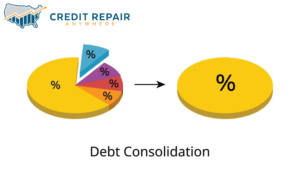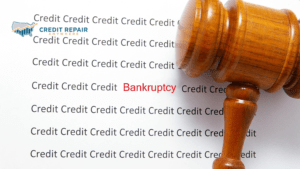Guide for buying a house
1. Understand why you want to buy a house
Purchasing a home is a major decision that shouldn’t be taken lightly. If you’re not clear on why you want to buying a house, you could end up regretting your choice.
Define your personal and financial goals. “Buyers should think about things like when they intend on moving and what they want in a home — amenities; ideal location and how long it could take them to save for a down payment,” says Edwence Georges; a sales associate with RE/MAX in Westfield, New Jersey. “These are all important to help define the goals they would like to meet.”
2. Check your credit score
Your credit score will help you determine your financing options; lenders use it (among other factors) to set your loan pricing and see if you’re able to repay your mortgage. The better your credit history, the better the chances you’ll have of securing financing with the best terms and rates.
You can get your credit report and score from each of the three major credit reporting agencies, Equifax, Experian and TransUnion; for free once a year. Your bank or credit card company might offer free access to your score or credit report, too.
3. Create a housing budget
Setting a realistic budget for your new home; will help inform what you can afford and how much your all-in costs will be.
The purchase price isn’t the whole picture. Carefully factor in other expenses to determine what you can afford. “Buyers tend to forget to factor in other costs, like homeowners association fees and setting money aside for maintenance costs” says Paige Kruger; Realtor and founder of Signal Real Estate in Jacksonville Beach, Fla. “Just because you can afford a mortgage and a down payment doesn’t mean you can afford those long-term costs after you move.”
4. Save for a down payment fora home
To avoid private mortgage insurance, or PMI; you’ll need to save at least 20 percent of the home’s purchase price for a down payment. Some lenders offer mortgages without PMI with lower down payments, but expect to pay a higher interest rate.
Research the down payment requirements for the loan you want so you know exactly how much you’ll need. If a friend; relative or employer has offered to provide a down payment gift; initiate a conversation early on to learn how much they plan to contribute and if there’s any shortfall you’ll need to cover — and secure a gift letter from them well in advance; too.
5. Shop for a mortgage for a home
Being preapproved for a mortgage is helpful when you make an offer on a house; and it gives you a firmer handle on how much you can afford.
Shop around with at least three lenders or a mortgage broker; to increase your chances of getting a low interest rate. Sign up for a Bankrate account to determine the right time to strike on your mortgage with our daily rate trends.
6. Hire a real estate agent
An experienced real estate agent; can save you time and money by helping you find your dream home and by negotiating with the seller on your behalf.
Contact several real estate agents and ask to meet with them for a conversation about your needs before choosing one. “Someone with knowledge of an area can tell if your budget is realistic or not; depending on the features you desire in a home,” Kruger says. “They can also point you to adjacent areas in your desired neighborhood or other types of considerations to help you find a house.”
7. See multiple home
Simply viewing listing photos isn’t a substitute for visiting homes in person, and getting to know the neighborhood and its amenities.
Let your real estate agent know what specific kinds of homes you want to see; a database of homes for sale, and set up automatic searches for those that meet your criteria. You may not be able to check off everything on your wish list. So you’ll want to prioritize what’s most important to you aside from location.
8. Make an offer
Understanding how to make an attractive offer on a home can help increase your chances the seller will accept it, putting you one step closer to getting those coveted keys.
Once you find “the one,” your real estate agent will help you prepare a complete offer package, including your offer price, your preapproval letter, proof of funds for a down payment (this helps in competitive markets) and terms or contingencies.
9. Get a home inspection
A home inspection helps you get an overall picture of the property’s mechanical and structural issues. The inspection will help you determine how to proceed with the closing process. You might need to ask the seller for repairs, or you might decide to back out of the deal if you have a contingency in the contract.
You can get recommendations for home inspectors from your real estate agent, but also be sure to do your own homework before choosing one. Depending on your contract and state of residence, you’ll generally need to complete a home inspection 10 to 14 days after you sign a purchase agreement. As a buyer, you’re usually responsible for paying the home inspector, and while the fees can vary, you’ll pay an average of $281 to $402, according to HomeAdvisor.
10. Negotiate repairs and credits
Your home inspection report may reveal major or minor issues. Major problems will likely need to be dealt with before your mortgage lender will finalize your loan, while minor issues can often wait till you take possession of the home.
Enlist your agent’s help to negotiate with the seller. Ask for the seller to either do the repairs or give you a credit at closing.
11. Secure your financing
Getting final loan approval means you need to keep your finances and credit in line during underwriting. Once you’re ready to close, you won’t want to open new credit lines or make other major purchases until the paperwork is signed.
How to get started: Respond promptly to requests for more documentation and double-check your loan estimate to ensure all the details are correct so there are no hiccups later. You may need to submit additional paperwork as your lender completes the underwriting process, such as:
- Bank statements
- Tax returns
- Additional proof of income
- Gift letter or written statements explaining major deposits into your bank account
12. Do a final walk-through
A final walk-through is an opportunity to view the property before it becomes yours. This is your last chance to view the home, ask questions and address any outstanding issues before the house becomes your responsibility.
How to get started: Come with your home inspection checklist and other documents, like repair invoices and receipts for any work the owner conducted, to ensure everything was done as agreed upon and that the home is in move-in ready condition.
13. Close on your house
Once all contingencies have been met, you’re happy with the final walk-through and the closing agent has given the green light to close, it’s time to make it official and close on your home. In this final step, your lender will issue you a “clear to close” status on your loan.
How to get started: Three business days before your closing date, the lender will provide you with a closing disclosure that outlines all of your loan details, such as the monthly payment, loan type and term, interest rate, annual percentage rate (APR), loan fees and how much money you must bring to closing. At the closing, you (the buyer) will attend, along with your real estate agent, possibly the seller’s agent, the seller, in some cases, and the closing agent, who may be a representative from the escrow or title company or a real estate attorney. This is also the time where you’ll wire your closing costs and down payment, depending on the escrow company’s procedures.



